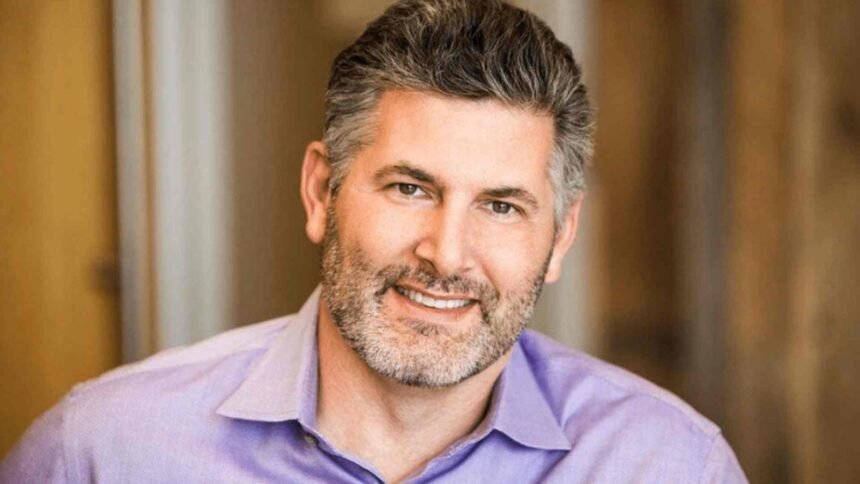Adam Nash, a Silicon Valley veteran with a passion for technology and purpose, is reshaping the future of philanthropy. As the CEO and co-founder of Daffy (Donor-Advised Fund for You), Nash is bringing a fresh, tech-driven approach to charitable giving one that makes generosity a part of everyday life for more Americans.
With decades of leadership at major tech companies like LinkedIn, Wealthfront, and eBay, Adam Nash saw a gap between personal finance and charitable contributions. In 2020, alongside co-founder Alejandro Crosa, he launched Daffy with a mission to make giving not only easier but a habit. Today, Daffy is rapidly growing as a platform for individuals who want to make tax-efficient donations and support causes they care about without the administrative hassle.
A Career Built at the Crossroads of Tech and Finance
Before founding Daffy, Adam Nash held senior positions at some of Silicon Valley’s most recognized firms. He was VP of Product at LinkedIn, where he helped scale the platform during a period of massive user growth. Later, as CEO of Wealthfront, he led one of the pioneering robo-advisors, bringing accessible, automated investing to the masses.
But his experience wasn’t just technical it was deeply personal. Nash observed that while people are encouraged to save, invest, and spend wisely, there was no simple, modern solution for charitable giving. Even though Americans donate over $500 billion annually, the process remains fragmented and reactive. That disconnect became the inspiration for Daffy.
Daffy: The “Donor-Advised Fund for You”
At its core, Daffy is a modern platform that encourages people to give consistently. Users create a tax-advantaged donor-advised fund (DAF), contribute cash, stocks, or crypto, and then allocate donations to any IRS-approved nonprofit all through an intuitive mobile app.
This idea isn’t entirely new donor-advised funds have existed for decades. But they’ve often been exclusive to high-net-worth individuals and managed by large financial institutions. Adam Nash believed that DAFs could be democratized. By removing high fees, streamlining the interface, and allowing for small monthly contributions (starting at just $10), Daffy opens charitable giving to a much broader audience.
“We built Daffy to solve a simple problem,” Nash has said. “Most people want to give more, but they don’t have a system for doing it. We provide that system.”
A Mission-Driven Platform with Real Impact
What sets Adam Nash and Daffy apart is their strong belief in behavioral finance. Nash draws from his background at Wealthfront and his studies at Stanford (he holds both a B.S. and M.S. in computer science, along with an MBA from Harvard) to build tools that drive action not just intent.
For instance, Daffy lets users set annual giving goals, track donations, and even invite family members to join their giving circle. It’s gamified in a way that encourages generosity, much like how apps like Mint or Robinhood encourage saving and investing.
And it’s catching on. In just a few years, Daffy has facilitated millions in donations to thousands of nonprofits across education, health, environment, and civil rights sectors. Whether it’s local food banks or global climate initiatives, users are giving more and doing it more often.
Transparency, Trust, and Tech at the Center
Philanthropy often struggles with issues of trust and transparency, but Nash is tackling that head-on. Daffy provides full visibility into all transactions, keeps administrative costs low (just $3/month), and ensures that 100% of donations go directly to the nonprofit. Unlike traditional platforms, Daffy doesn’t take a cut from donations it’s truly built with donors in mind.
Security is also a priority. With bank-level encryption and compliance with IRS guidelines, users can trust the platform to manage their donations securely and in a tax-optimized way. It’s philanthropy, but smarter.
From Product Visionary to Purposeful Leader
Adam Nash isn’t just building a product he’s championing a cultural shift. In interviews and on his popular blog and social media platforms, Nash consistently advocates for “intentional giving.” He believes generosity should be planned, not spontaneous, and that technology can make that easier.
He also emphasizes that giving is not just for the wealthy. “Everyone, regardless of income, has the capacity to give,” Nash says. “Daffy is here to make sure they have the tools to do it.”
What’s Next for Adam Nash and Daffy?
Looking ahead, Nash has big ambitions. He wants Daffy to be as ubiquitous as budgeting or investing apps. He envisions integrations with payroll platforms so people can contribute to their giving accounts directly from their paycheck just like a 401(k).
The company also plans to expand support for team and workplace giving, as well as broader financial tools that connect giving with overall wealth planning.
In many ways, Nash is taking a Silicon Valley ethos scaling good through innovation and applying it to philanthropy. And in a time when trust in institutions is declining, Daffy’s transparency and user-first model offers a refreshing alternative.
Adam Nash is proving that generosity can be reimagined for the digital age. Through Daffy, he’s helping people align their values with their financial behavior, making charitable giving a consistent, meaningful part of their lives. In a world driven by consumption, Nash’s mission reminds us of something deeper: the power of giving and the power of making it a habit.






